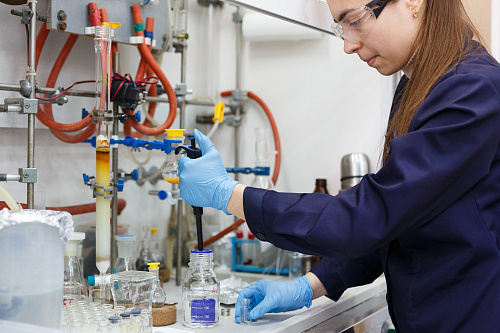
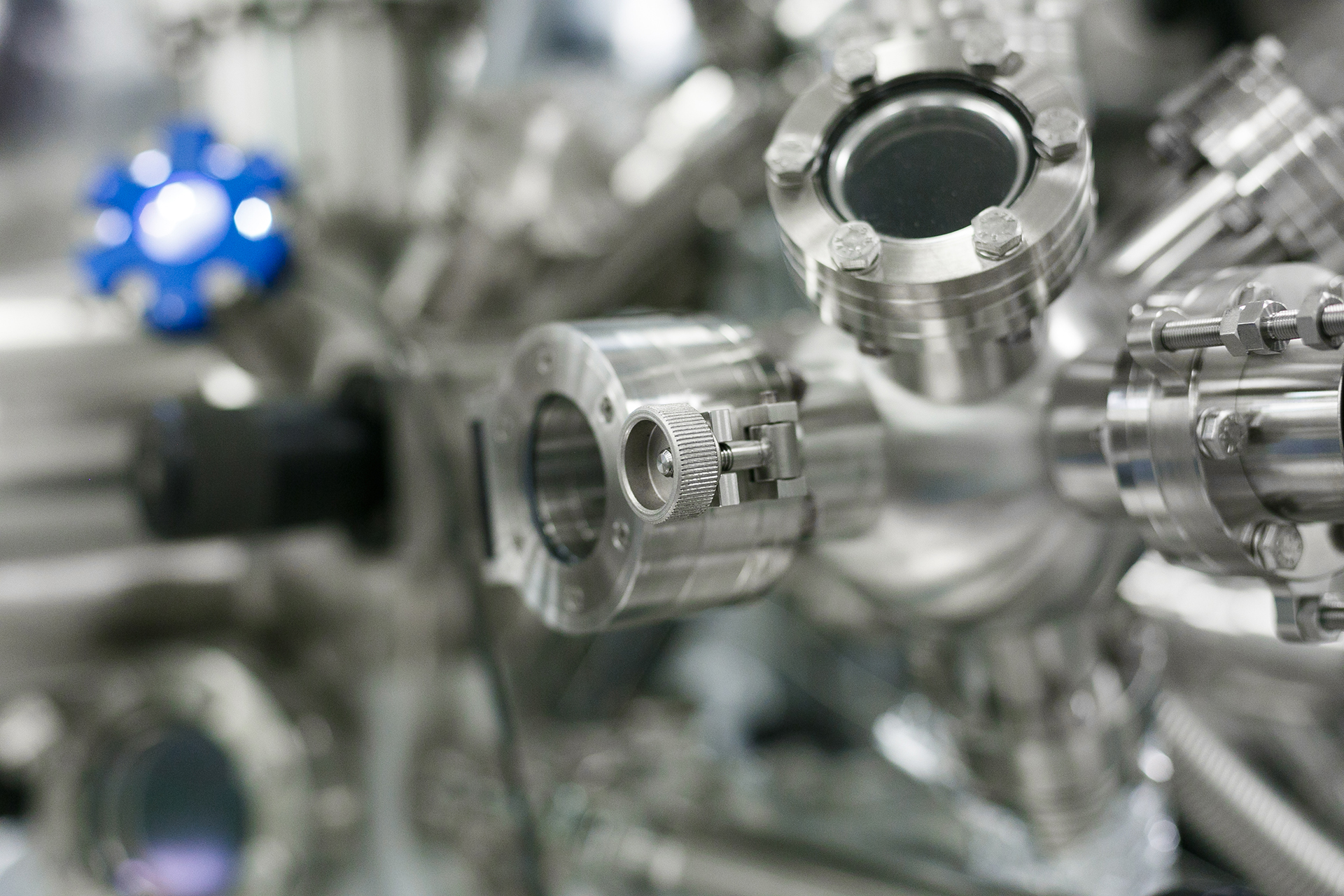
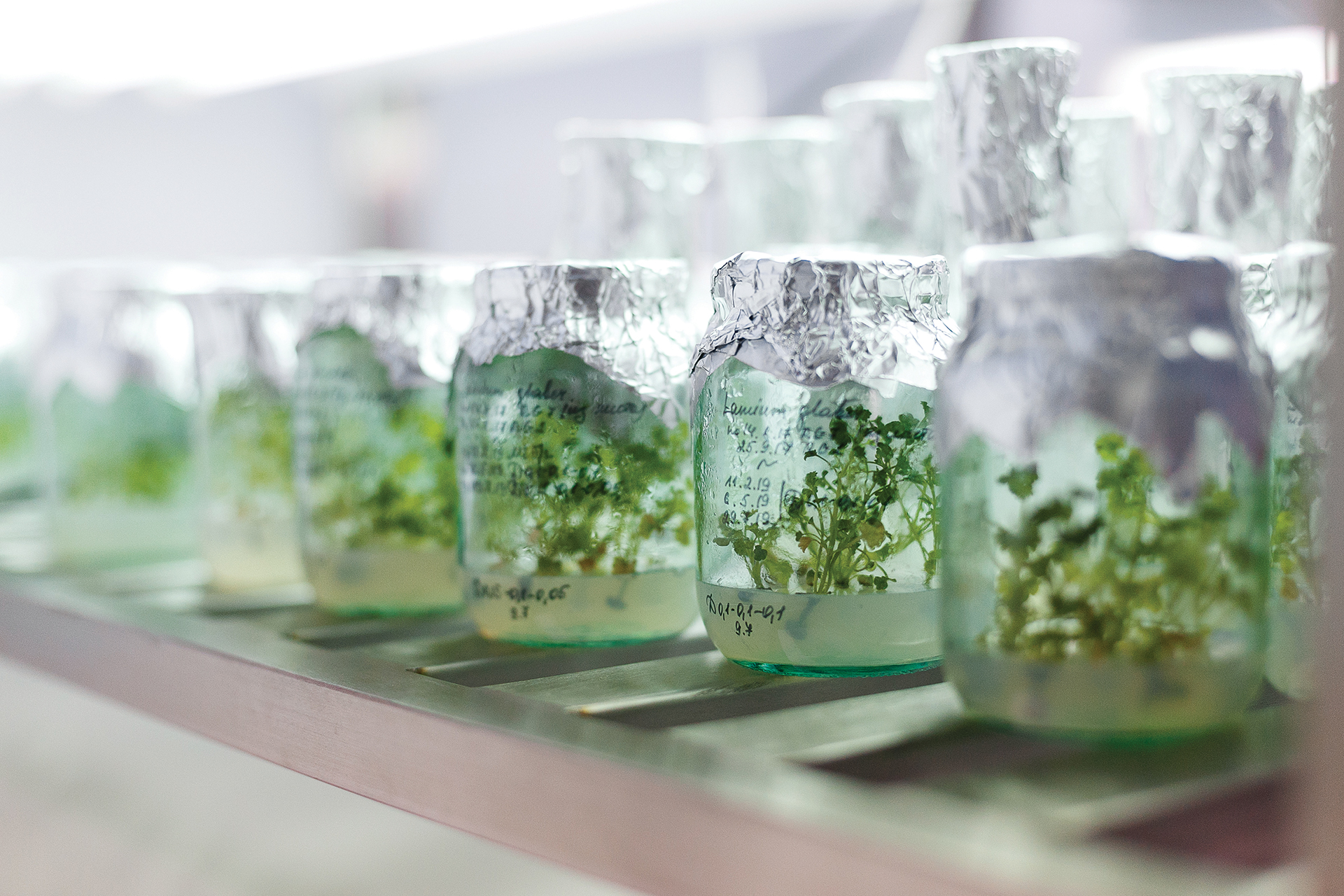
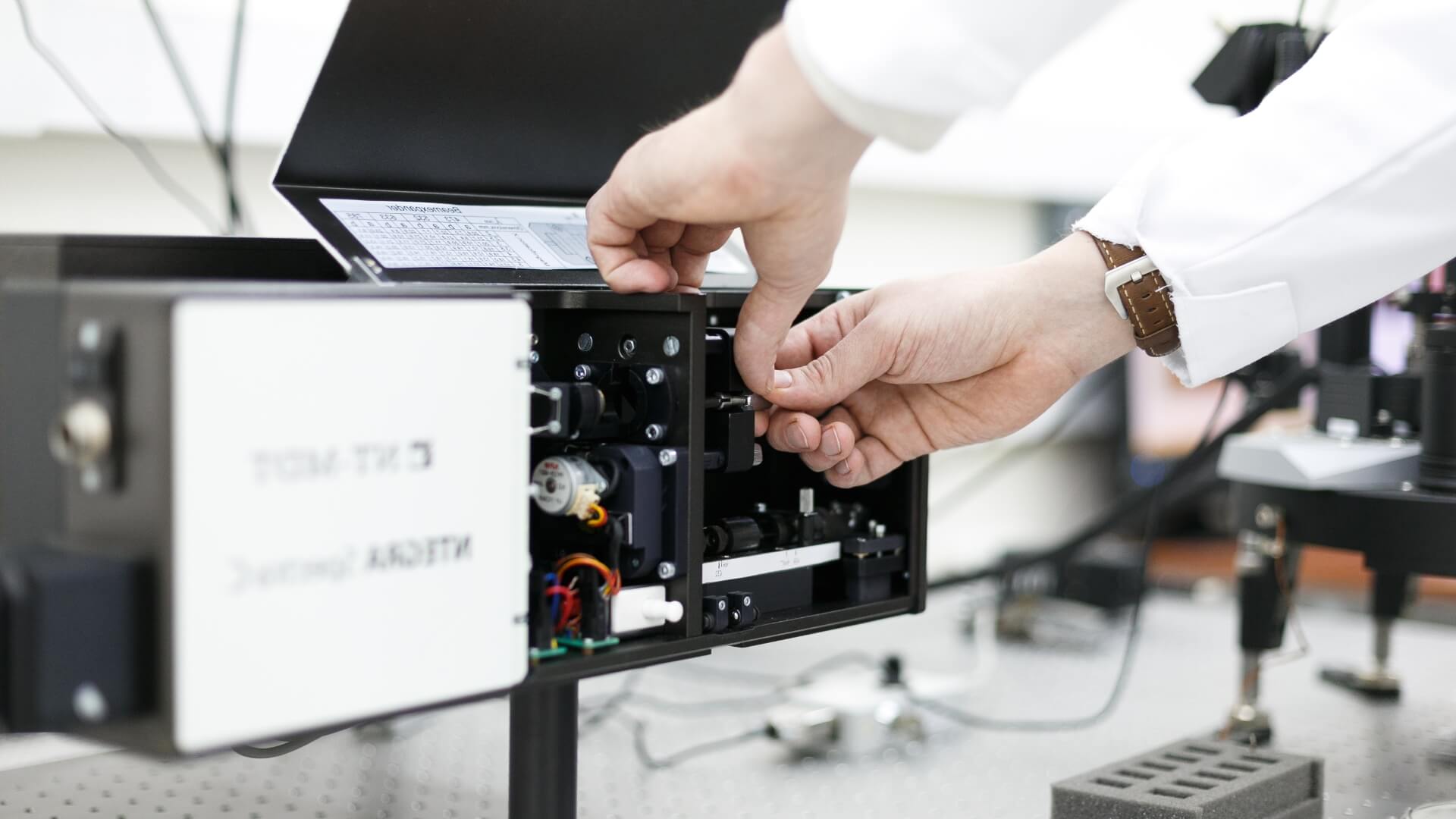
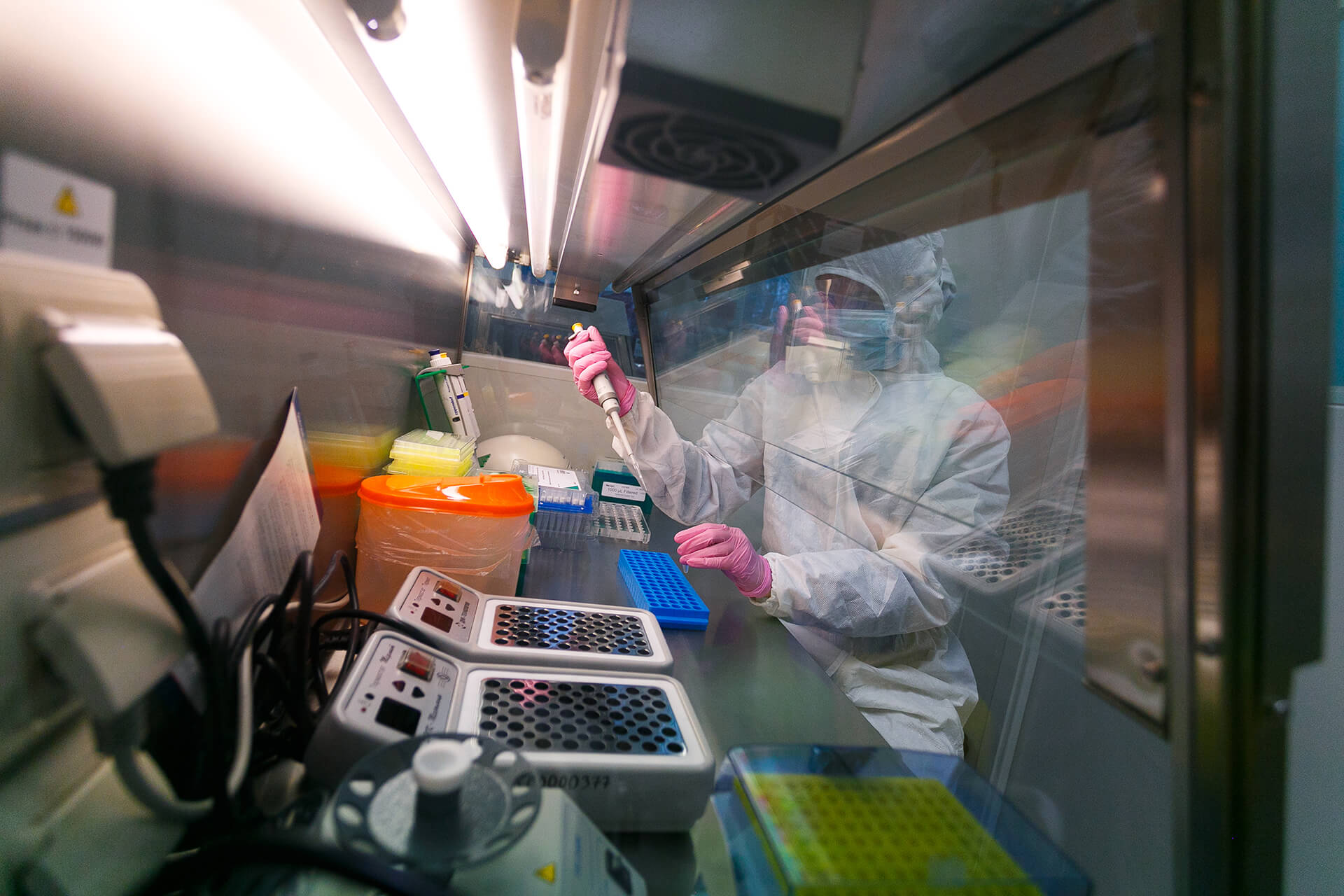
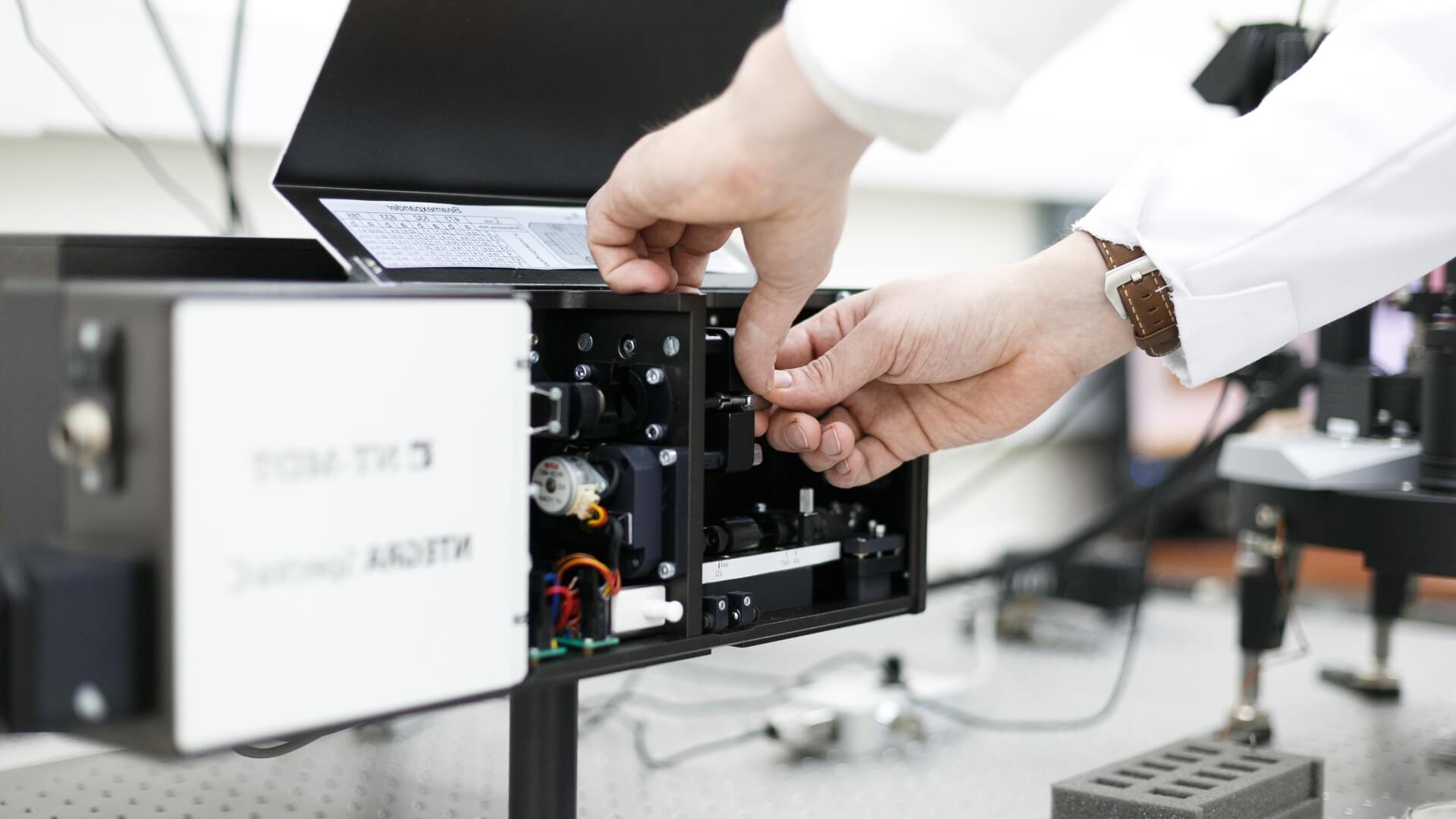
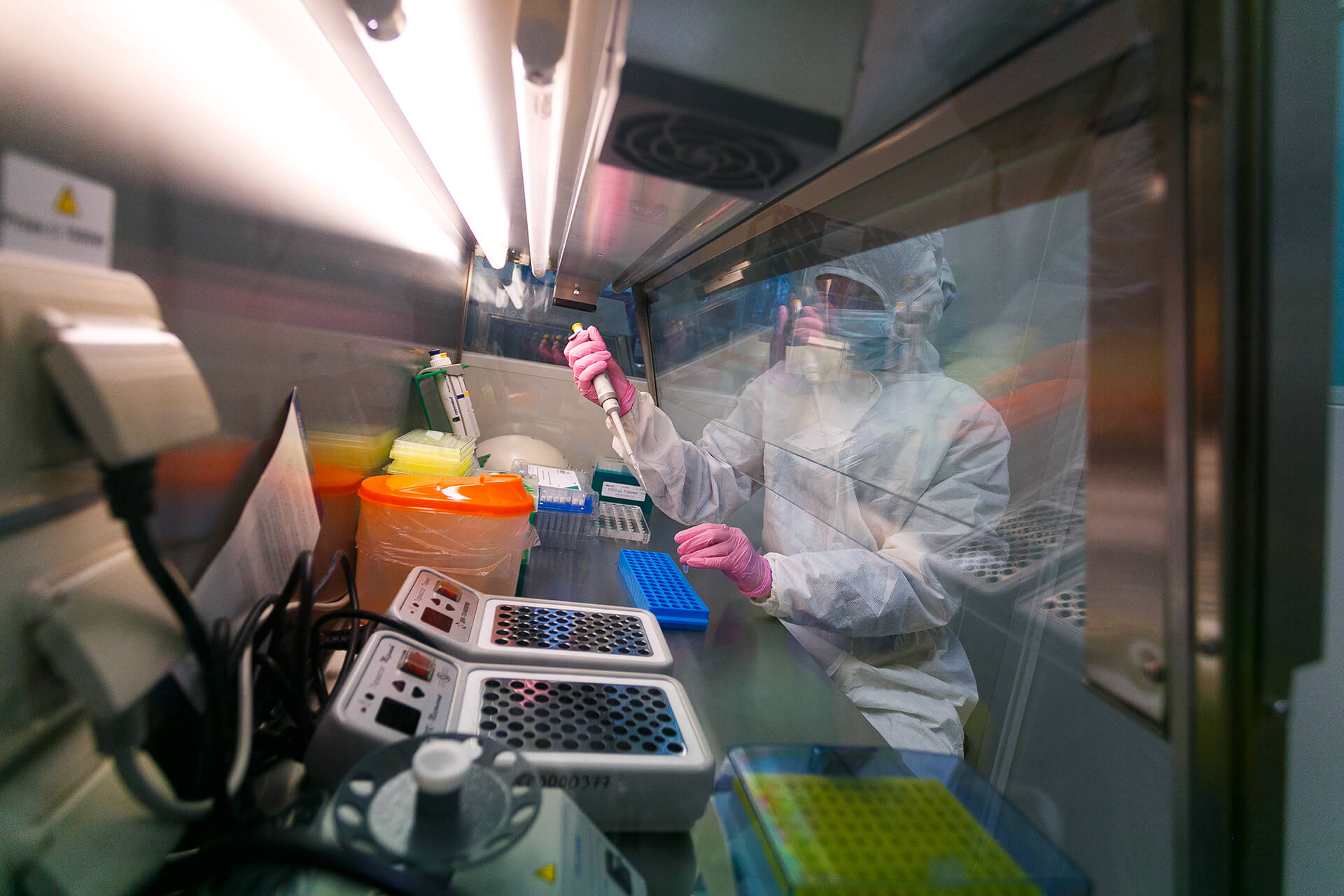

Mathematicians help find effective treatments for complex diseases
The effectiveness of drugs against HIV is reduced by infected cells "sleeping" in the body and "hiding" from treatment. Researchers reviewed numerous studies, created several mathematical models for the development of HIV, and proposed a new approach to treat the infection. Scientists have proposed using a natural mechanism to maintain the constancy of the cells of the immune system, when younger cells wash out more mature ones, including inactive infected cells. The research team is now creating a software package for the study of complex systemic diseases, including HIV and COVID-19, in order to help doctors find effective methods of combination therapy with a minimum of drugs.
HIV infects cells of the immune system that have the CD4 protein on their surface. The virus attaches to these proteins, penetrating into the cell, and, causing a gradual depletion of the population of CD4 immune cells (T-lymphocytes), suppresses the immune system. This is the way AIDS develops. Without medical intervention, patients die on average 9-11 years after infection. With antiretroviral therapy, which includes taking several drugs, the patient's life expectancy can be extended to 70–80 years. At the same time, the concentration of free viruses decreases, but infected cells remain.
One of the reasons for HIV resistance to antiviral drugs lies in the ability of the virus to remain in an inactive form in infected cells for many months or even years. This reduces the effectiveness of antiretroviral drugs. The infected cell is simply not recognized by the immune system for subsequent destruction.
Researchers from the Marchuk Institute of Computational Mathematics of the Russian Academy of Sciences along with an international group of researchers took part in the development of a fundamentally new approach to fighting infected cells - “wash and replace”. That is, to flush out parts of the more mature cells of the immune system, including "dormant" and "hiding" (latently infected) CD4 T lymphocytes. This is due to the entry of less specialized (that is, not yet "determined" with a role in the body) cells into the organs where immune cells are born, and their competition for survival.
According to the researchers, if immune cells are specifically activated with antiretroviral therapy, this can accelerate the process of renewing the lymphocyte population.
By simulating these and other complex systemic diseases on a computer, including COVID-19, scientists are creating a software package that will help calculate the most appropriate method for diagnosing and treating socially significant diseases.
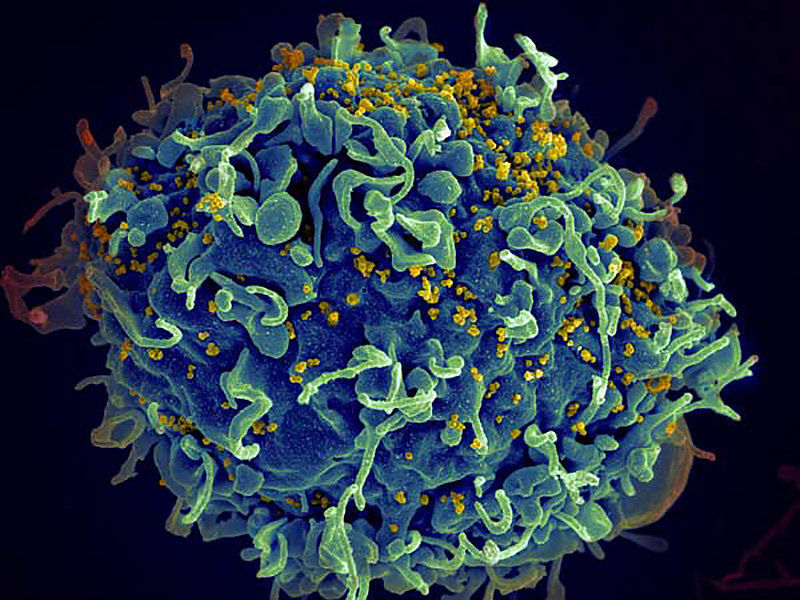
Credit: Pincus, Elizabeth Fischer and Austin Athman, National Institute of Allergy and Infectious Diseases, National Institutes of Health
The most mysterious particle that keeps the secrets of the Universe
Russian researchers solved a problem that drew attention of physicists all over the world in recent years. The research team that studies the nuclei of active galaxies by chance discovered that it is in them that high-energy neutrinos are born. These are particles that violate almost all physical laws and allow you to answer key questions about the structure of the Universe.
Neutrinos of different energies come to us from space. Particles practically do not interact with anything and can fly through anything and anyone, flying around the entire Universe. Thanks to this, neutrinos bring us information about the object that generated and emitted them. So, with the help of solar neutrinos, scientists were convinced that thermonuclear reactions take place in the center of the sun. High-energy neutrinos are generated only by very fast protons. That is, high-energy neutrinos that astrophysicists register on Earth provide us information about "space super-colliders", particle accelerators, while on Earth people spend billions of dollars to build high-energy infrastructure in order to study the universe better.
Researchers from the Lebedev Physics Institute of the Russian Academy of Sciences, Moscow Institute of Physics and Technology, and the Institute for Nuclear Research of the Russian Academy of Sciences carried out a massive analysis of data on quasars, the nuclei of active galaxies. Information was obtained from the world's interferometric networks of telescopes and the Russian radio telescope RATAN-600.
There are supermassive black holes at the centers of quasars. During the fall of matter onto the black hole, part of the particle flux is thrown out and accelerated. The most important question remained open: can this system accelerate massive protons, and not just light electrons? To find out, the researchers compared radio observations with information on neutrinos. It turned out that quasars look brighter if they are in those regions in the sky where neutrinos came from. In addition, at the moment when scientists register neutrinos, they also register bursts of radio emission from these quasars. So scientists found a connection between quasars and neutrinos.
Now astrophysicists conclude with high reliability that it is quasars that are able to accelerate protons to the speed of light, and they, in turn, generate neutrinos. Today, the Baikal neutrino telescope, which “catches” neutrinos under water, has also been connected to the study of quasars. In the future, the neutrino promises to reveal to us information about what happened after the Big Bang, for example, how galaxies appeared and why there is more matter in space than antimatter, although after the Big Bang they were equally divided? In addition, studies of neutrinos will help to understand how space super-colliders work in quasars.

Illustration. The RATAN-600 telescope helps to figure out where neutrinos are born. Credit: Daria Sokol, MIPT Press Service
Prototypes of batteries for vehicles that will replace lithium
A group of scientists presented the first Russian prototypes of sodium-ion batteries, which promise to become an alternative to more expensive lithium-ion batteries, as well as lead-acid batteries - due to their greater energy intensity. If this technology is adopted, Russian developers will not have to purchase batteries for electric vehicles, industrial robots and energy storage systems abroad.
Sodium is in sixth place in terms of distribution in the earth's crust, moreover, it is easy to obtain, unlike lithium, and the cost of its salts is about a hundred times less than lithium. Although the first work in the field of sodium-ion batteries appeared at about the same time as lithium, the latter had a higher capacity and power, so scientists and manufacturers focused on them. However, studies carried out in recent years have demonstrated the possibility of obtaining characteristics of sodium-ion batteries, which are almost as good as lithium "competitors".
Researchers of the Faculty of Chemistry, Lomonosov Moscow State University investigated many materials for the cathode and anode of sodium-ion batteries and found that many of them show capacities comparable to those of lithium-ion batteries, and sodium cations in them were more mobile than lithium.
In addition, scientists have found that it is possible to replace a heavy and expensive copper current collector with a cheaper and lighter aluminum one, which will help reduce the cost of batteries and improve their safety.
Now researchers are optimizing the compositions of the main components of sodium-ion batteries, studying the performance of prototype batteries, their safety and frost resistance. Several Russian chemical and energy businesses became industry partners and co-investors of the project.
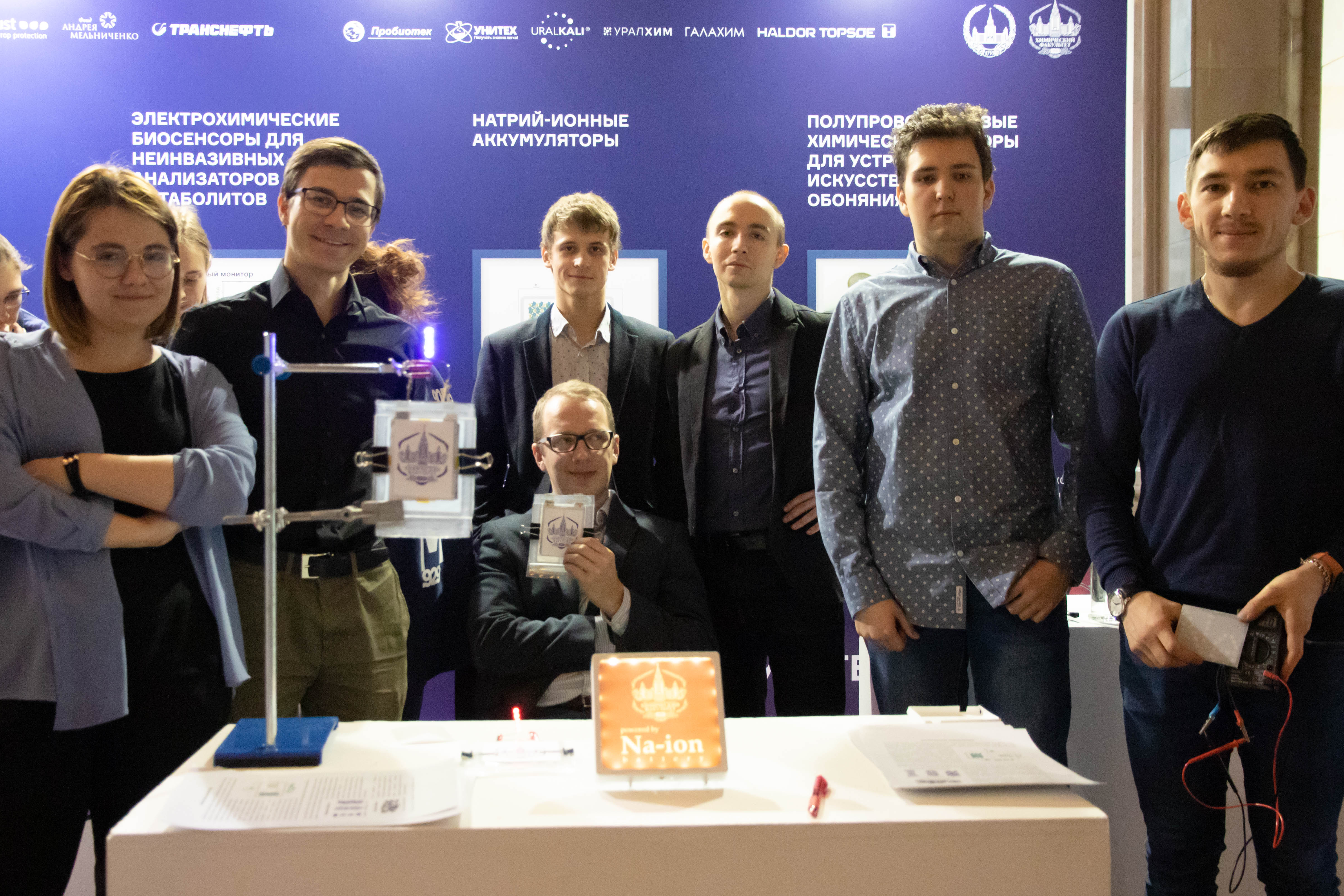
Presentation of the first Russian prototypes of 500 mAh sodium-ion batteries. Credit: Oleg Drozhzhin
Living plants that constantly illuminate in the dark
James Cameron's Avatar depicts a fantasy world of lush vegetation and mesmerizing glowing jungle. But what until recently seemed like science fiction - illuminating plants - is now becoming a reality thanks to modern advances in genetics and biochemistry. An international team of researchers studied plants that illuminate in the dark. They are ten times brighter than their predecessors. In the near future, decorative indoor plants illuminating in the dark are expected to go to the global marketplace.
There are many types of living beings in the world that can glow (bioluminesce) by themselves. Researchers from the Institute of Bioorganic Chemistry of the Russian Academy of Sciences with Planta company as industrial partner, found out what chemical mechanisms make mushrooms illuminate, and transferred the DNA necessary for glowing into plants. The illumination of plants is visible to the human eye and is sustainable from the moment of birth to death.
It turned out that the organic molecule necessary for the illuminations of fungi is also used by plants to build cell walls. For light to appear, this molecule, called caffeic acid, must go through a cycle of biochemical transformations involving four enzymes. Two enzymes convert caffeic acid into a more complex molecule, which is then oxidized by a third enzyme to emit a photon. Another enzyme converts the reaction product back to caffeic acid, closing the cycle.
In plants, caffeic acid is a building block of lignin responsible for the mechanical strength of cell walls, that is, a part of the plant biomass. In addition, caffeic acid is also required for the synthesis of pigments, volatile compounds and antioxidants. Thus, the luminescence and metabolism of plants are closely related, and therefore the luminescence can reflect the physiological status of plants and their response to the environment.
The researchers made only tobacco plants illuminate, but they plan to expand the line of plants and bring them to the market in a couple of years.
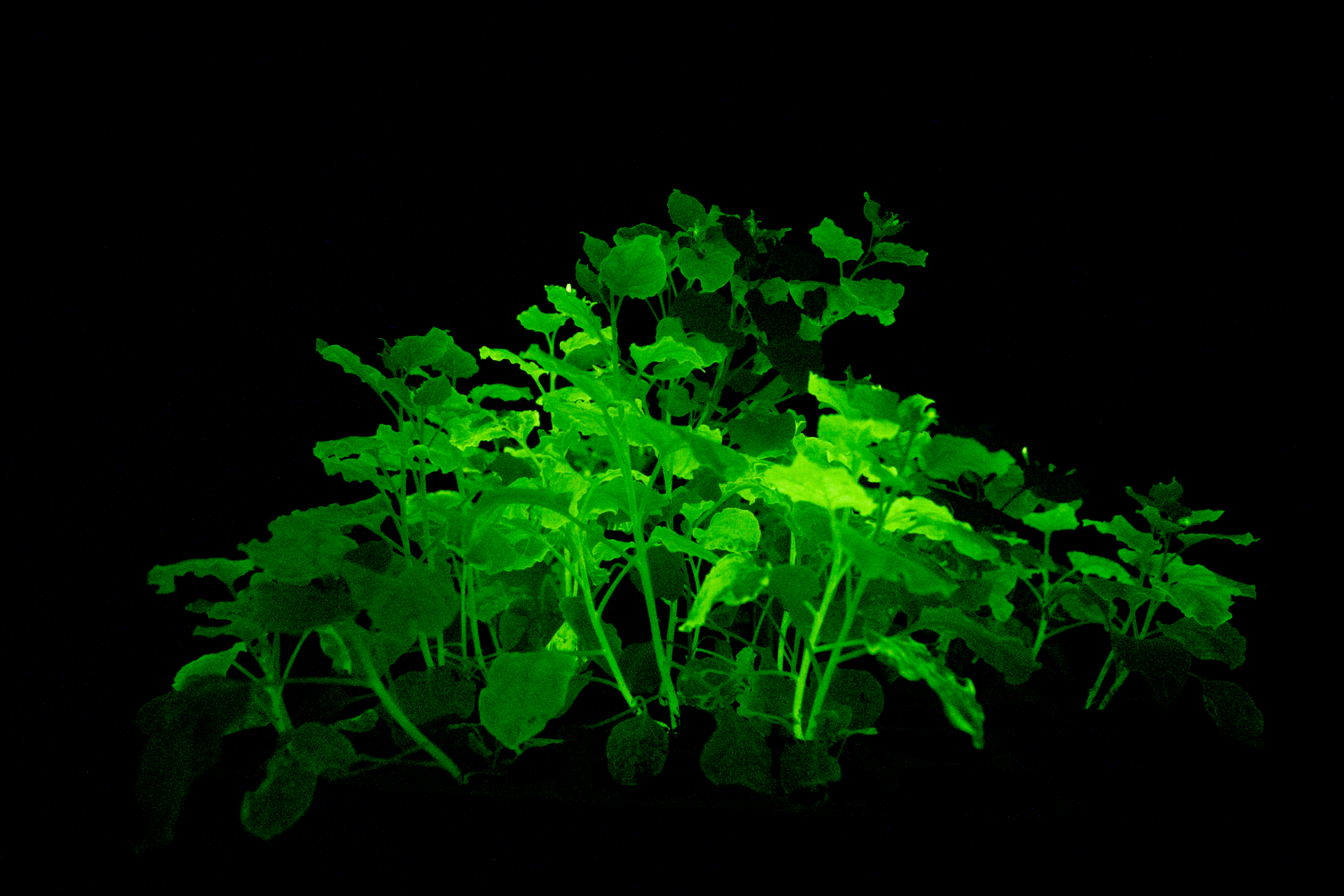
Credit: Planta & Light Bio
The effect of conventional antibiotics was improved to avoid resistance to them
The overuse of antibiotics has made bacteria resistant to them. One way to overcome it is to search for new antibiotics. But Russian researchers propose an innovative approach. Along with old antibiotics, they use suppressors (inhibitors) of enzymes that protect bacteria from external threats, including antibiotics. Experiments on bacteria have confirmed the promise of this strategy. If it comes into practice, there will be no need to develop new antibiotics, spending a lot of money and time on R&D.
Our body contains hydrogen sulfide, which, like nitrogen and carbon, regulates blood pressure, has anti-inflammatory effects in infections, and much more. Bacterial cells also produce hydrogen sulfide, which, as Russian scientists have previously proved, protects cells from death and makes them resistant to antimicrobial drugs. This resilience leads to difficulties in medicine and agriculture and is becoming one of the key problems of humanity today.
Knowing this, a group of researchers from the Engelhardt Institute of Molecular Biology of the Russian Academy of Sciences found inhibitors (suppressors) of bacterial enzymes responsible for the synthesis of hydrogen sulfide. In addition, they found new targets for bacteria that could be targeted by future antimicrobial drugs - enzymes involved in the synthesis of the bacterial cell wall. Artificially synthesized inhibitors of these two groups of enzymes, as experiments have shown, make bacteria vulnerable to existing antibiotics.
The use of such inhibitors will increase the effectiveness of a wide range of antibiotics in the treatment of bacterial infections.

Credit: healthline.com
Tested drug for personalized gene therapy based on patient's blood cells
Russian scientists have developed and tested on animals a new drug to restore the spinal cord after injuries. A product based on the patient's blood cells and human therapeutic genes is ready to begin large-scale preclinical trials.
Gene therapy is gaining more and more popularity in the treatment of diseases. That is the introduction into the body of "healthy" genetic material capable of repairing DNA defects in the patient's cells or imparting new properties to the cells. To successfully and safely deliver DNA, scientists use white blood cells, leukocytes, which can be easily obtained from the patient's own blood.
Recently, research team from the Kazan State Medical University developed a simple, safe and economical way to obtain white blood cells enriched with artificial genetic material. To do this, leukocytes are separated from the patient's whole blood using special starch. Then, a therapeutic gene or a combination of genes is added to the leukocytes as part of a harmless viral vector that delivers therapeutic genes to leukocytes. On the next day, the resulting drug can be injected back into the patient's bloodstream. This technique has several advantages. For example, leukocytes easily move through the bloodstream and penetrate into different tissues without causing an immune response. The genetic material they transport will ensure the production of proteins that are beneficial to the patient.
The technology has been shown to be effective in rats and minipigs, and now scientists are ready to begin large-scale preclinical trials of the drug.
In the future, the use of technology will allow people to cope with the consequences of stroke, neurotrauma and degenerative diseases of the nervous system, correct blood clotting disorders, stimulate the growth of blood vessels during a heart attack, increase the rate of bone tissue regeneration, and more, depending on the therapeutic genes that will be carried by leukocytes.
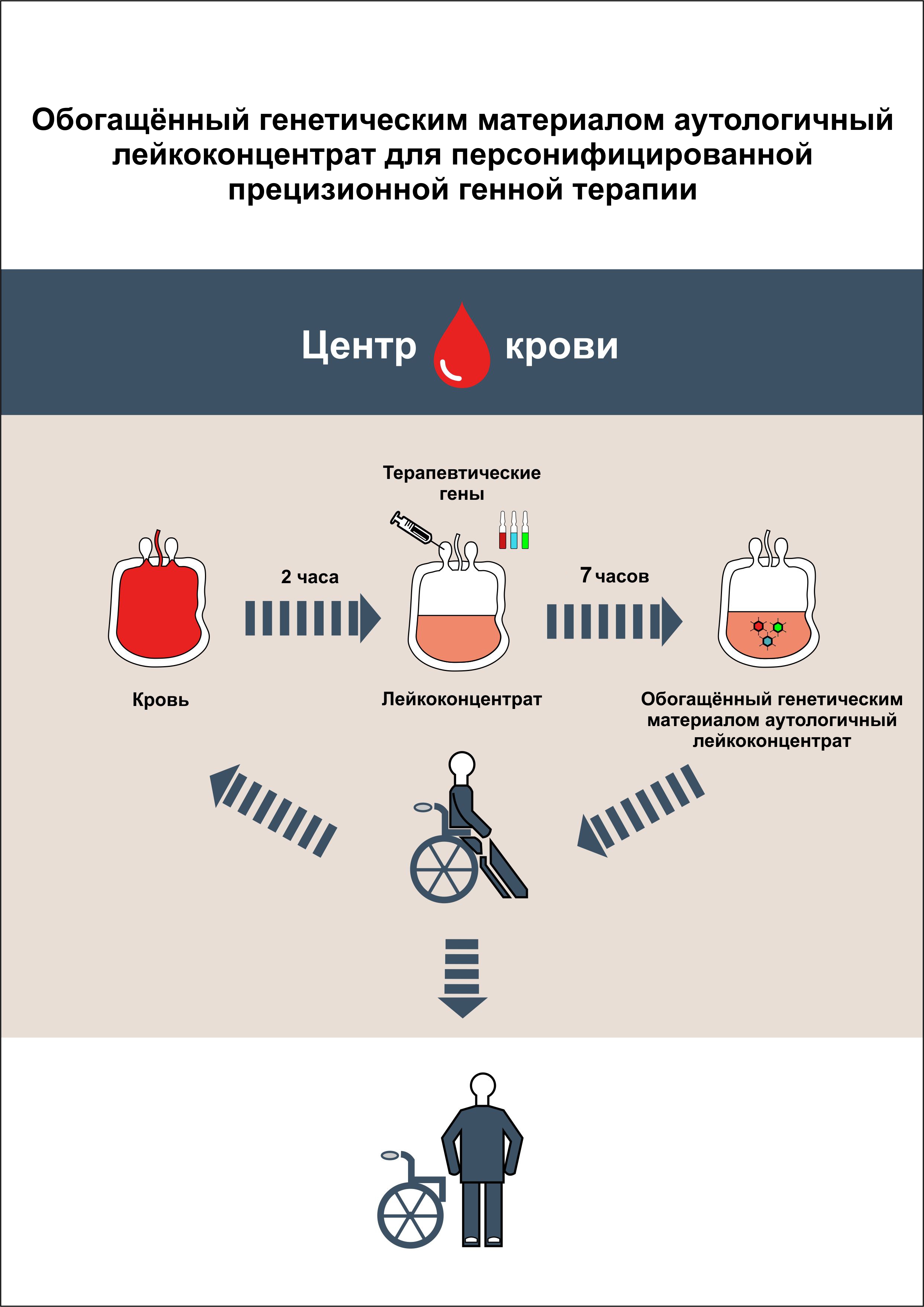
Scheme of obtaining and using genetically modified leukoconcentrate - a drug that was developed and patented by scientists from Kazan State Medical University. Source: Rustem Islamov
Proteins in plants help create more nutritious and hypoallergenic varieties
Type 2 diabetes, Alzheimer's disease, and a host of other diseases are associated with abnormal production of amyloid proteins. However, humans, animals, fungi and bacteria also have amyloids, which are involved in vital processes in the cell. Recently, a group of Russian scientists first discovered such proteins in plants and found that they were responsible for the "conservation" of nutrients inside the seeds. This discovery could help create varieties of legumes with less allergenic seeds. Already, the researchers are working to create more nutritious plant varieties that have fewer amyloids.
One of the strongest food allergens for humans is vicilin. Various legumes have it, including peanuts and peas. In their study, researchers from the All-Russian Research Institute of Agricultural Microbiology, St. Petersburg State University, the Institute of Cytology of the Russian Academy of Sciences, the Institute of Theoretical and Experimental Biophysics of the Russian Academy of Sciences, Kazan Federal University, together with their French collaborators, showed that it is this protein that forms most of the amyloids in pea seeds, which may explain their allergenic properties. Amyloids are extremely stable as they are preserved during seed conservation and heat treatment. In this case, plants, in turn, need amyloids for nutrition and protection against pathogens. The extreme stability of amyloids also explains the ability of seeds to survive various adverse conditions and germinate after many years.
Another possible applied value of this work is the future development of plant cultures with supernourishing seeds. Scientists' experiments in vitro (in vitro) have shown that mammals are not able to digest plant amyloids completely. They cannot be broken down by digestive enzymes. Amyloids significantly impair the nutritional value of seeds, so it is important to understand how the formation of amyloids in plant seeds can be reduced in order to obtain varieties with more common proteins. Such crops can be especially useful and nutritious for humans.
In the future, the study of the molecular mechanisms of the formation of amyloids in seeds, which is underway, will help create more nutritious varieties of various plants, including peas and peanuts.
The research group has already started studies to create plant varieties with fewer amyloids.
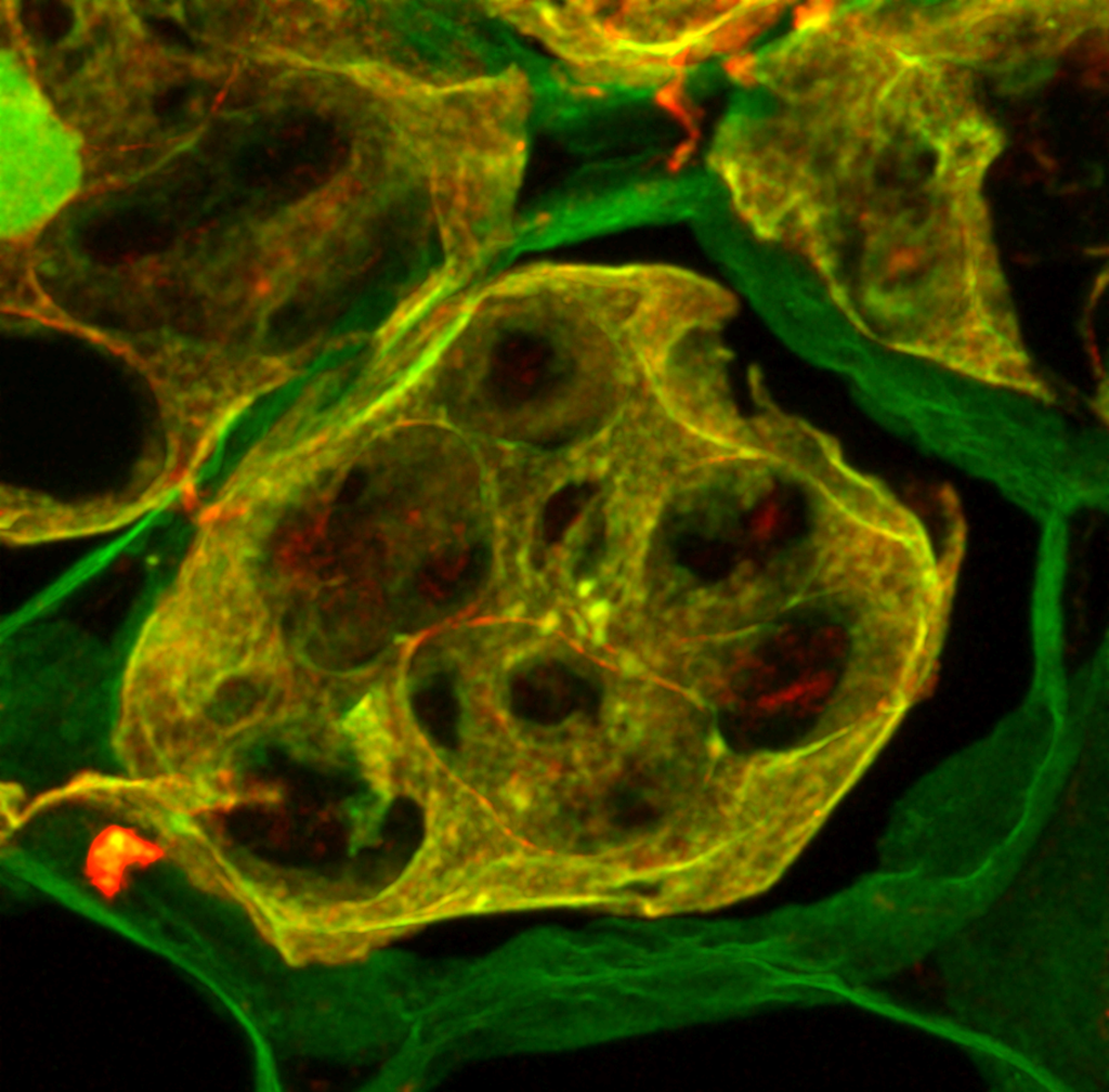
Colocalization of antibodies against vicillin (red) with amyloid-specific dye thioflavin-T (green) on cryosections of pea seeds. Colocalization is shown in yellow. Source: Antonets et al., PLOS Biology, 2020
New model for climate studies and weather prediction
A group of researchers developed a unique three-dimensional dataset on the state of the atmosphere in the North Atlantic over the past 40 years. The model on that basis allows reproducing about 200 basic atmospheric parameters with high resolution, which makes it possible to observe extreme atmospheric phenomena, such as thunderstorms and typhoons, and assess their role in the global climate system of the Earth. The scientists plan to expand the scale of their model so that such phenomena can be studied all over the world, and even forecast the weather, and for a longer period than now.
Over the past few decades, numerical modeling has been helping to predict the weather and study the climate and its changes. Global models of the general circulation of the atmosphere and ocean cover the entire planet with a "network", at each node of which the parameters such as pressure, temperature, air humidity, wind speed and others, are known. They allow you to study past events and make predictions of the future.
But these models do not show small-scale phenomena, which, nevertheless, make a significant contribution to the dynamics of both the atmosphere and the ocean. To study them, you have to build separate local "maps". The new model developed by the researchers from the Shirshov Institute of Oceanology of the Russian Academy of Sciences and their foreign collaborators overcomes this obstacle and sees all events in the ocean. The spatial resolution reaches 14 kilometers, which makes it possible to detect small cyclones, intense atmospheric fronts, showers, typhoons, etc.
The data makes it possible to analyze about 200 parameters of the surface and the free atmosphere - pressure, temperature, air humidity, electrical indicators and others - every 3 hours from 1979 to the present.
To build such a model, they used a database of atmospheric reanalyses, combined observations of the atmosphere collected from satellites, aircraft, ground and water weather stations around the world.
The model now shows the situation over the North Atlantic over the past 40+ years. This region is considered the source of the weather for the entire Northern Hemisphere, and the processes occurring at the boundary between the ocean and the atmosphere affect, among other things, the climate over the continents. However, in the future, scientists plan to expand the scale of their model and study in detail the contribution of valuable for predicting local processes of interaction between the ocean and the atmosphere in the formation of the Earth's climate.
Research team. Credit: Natalia Tilinina
Archaeologists’ large-scale analysis of an ancient man in the Caucasus
A group of scientists for the first time investigated two of the three known sites of ancient people of the end of the Stone Age era in the Central Caucasus, where an important migration route to the vastness of northern Eurasia lay. It was 10-12 thousand years ago that people of the modern type began to appear, who began to use new technologies in everyday life. The researchers found that the primitive hunters living in the Elbrus region traveled long distances and used new technologies for processing bone and stone. This information significantly supplemented our knowledge of the development of the culture of that era.
The researchers from the Laboratory of Prehistory studied two sites, the Psytuazhe canopy and the Sosruko grotto.
An obsidian deposit is located in the Elbrus region. This volcanic glass was highly valued in the Paleolithic, and products from it were exported to the neighboring regions of the Caucasus. Obsidian was actively used by the inhabitants of the Psytuzhe canopy and the Sosruko grotto, which are located at a distance of 30 km from the deposit.
To determine the age of the finds (primarily bones), scientists turned to radiocarbon analysis. That is the study of the remains of carbon isotopes that are deposited throughout the life of living beings and persist after death. So it became clear that 15 thousand years ago the forest-steppe and dry climate prevailed in this area. The ancient man hunted a wild boar. Later, 12-10 thousand years ago, in the grotto there was a camp for collectors of shells, many of which were burnt, which suggests that ancient people ate them. Inhabitants of the canopy hunted deer and mountain tour.
Hunting tools (microliths) appeared in the Elbrus region earlier than expected. New research shows that at the end of the Ancient Stone Age, significant changes take place in the processing technologies of obsidian and flint, new types of hunting weapons appear.
Now, the archaeologists will study the periods of cold snap in the Caucasus, which led to the appearance of clothes, dwellings and other innovations in human culture.
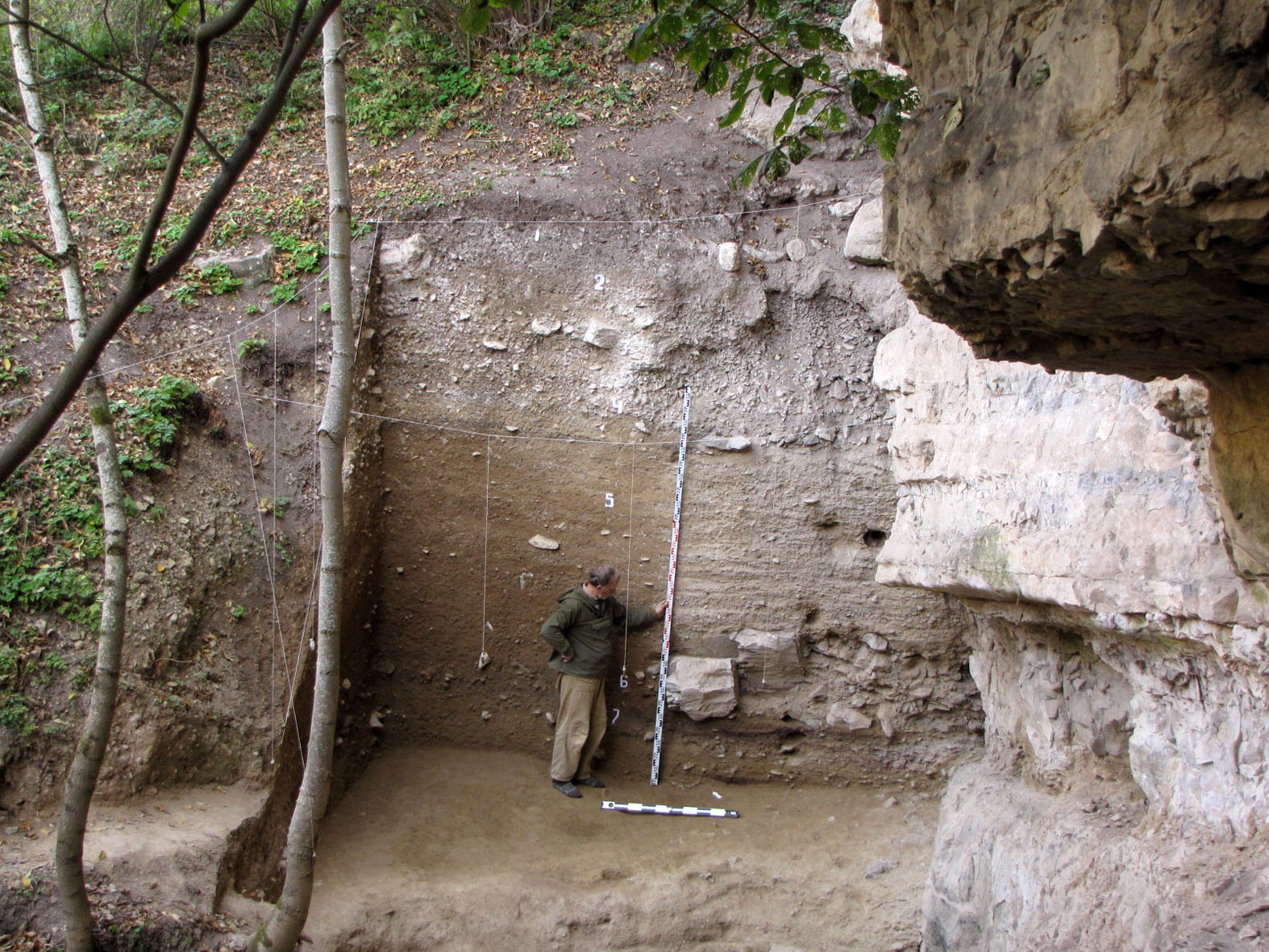
A view of the excavation and the section of sediments in the Sosruko grotto. Credit: research team
The sensor identified lung disease faster than existing detection methods
A group of researchers developed a compact sensory system that can analyze exhaled air and detect diseases of the respiratory tract and organs. In the experiments, the system accurately identified patients with chronic obstructive pulmonary disease (COPD), an inflammatory airway disease that increases the risk of complications from COVID-19 infection. The researchers are now optimizing the design to make it more functional and expand the range of detectable substances.
Chronic obstructive pulmonary disease develops in the mucous membranes of the bronchi in response to pathogenic external factors and leads to a negative change in the functions of the respiratory tract. Methods for detecting this disease are complex and time-consuming, which is inextricably linked to the threat to the patient's health. Conventional methods for breath analysis, such as gas chromatography and mass spectroscopy, are expensive and time consuming, requiring new approaches that are low cost and fast to test.
The sensor system developed by the researchers from the Moscow Institute of Electronic Engineering and their foreign collaborators is based on modified carbon nanotubes, from which flexible and elastic conductive films can be made. The main task of the development is to imitate the olfactory system of living beings.
The study of the effectiveness of the new system involved 12 patients with COPD and 9 healthy people in accordance with the rules of clinical trials. The system detected all people with chronic lung disease by detecting increased concentrations of exhaled nitrogen dioxide. The gas content is less than one molecule per million molecules of exhaled air, which indicates the high sensitivity of the developed sensors.
Today, this group of researchers is striving to make the design more compact and also to train it to recognize more substances.
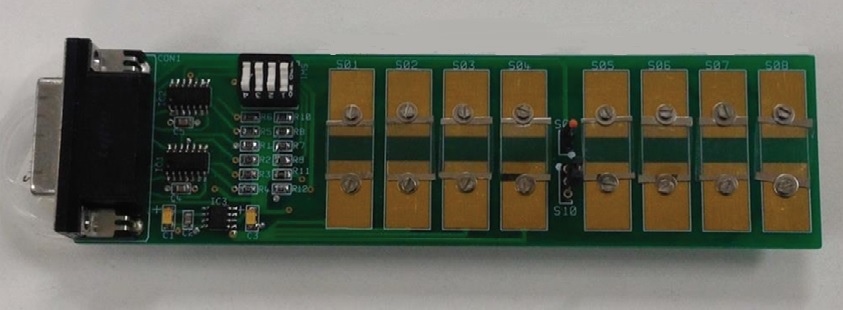
Eight sensor electronic nose matrix board. Credit: Sonia Freddi et al / Advanced Healthcare Materials, 2020
